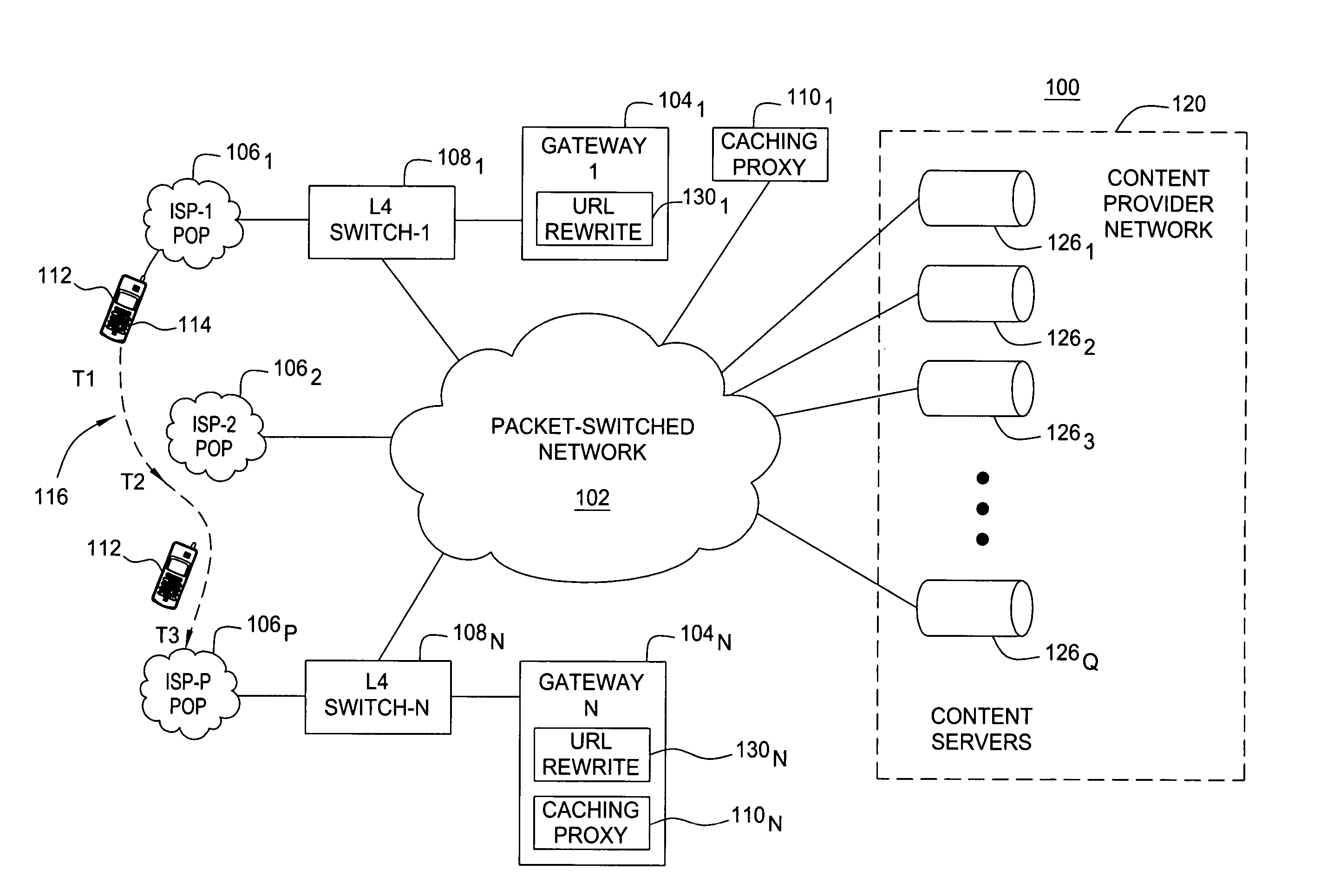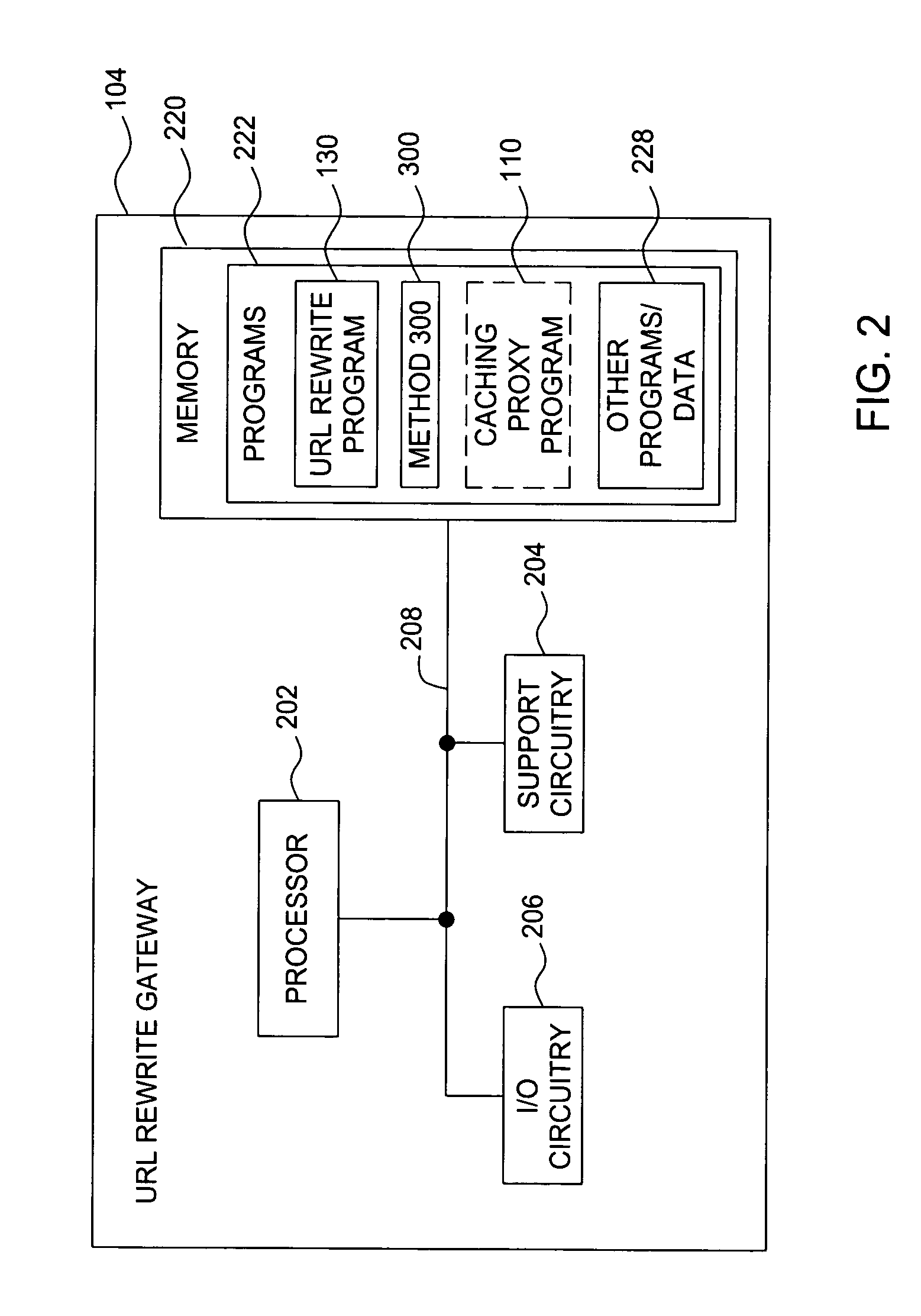Session level technique for improving web browsing performance on low speed links
a low-speed link and web browsing technology, applied in the field of computer networks, can solve the problems of increasing the delay incurred by dns lookups, increasing the difficulty of dns search, and frequent queries of browsers
- Summary
- Abstract
- Description
- Claims
- Application Information
AI Technical Summary
Problems solved by technology
Method used
Image
Examples
Embodiment Construction
[0020] The present invention provides a method and apparatus for providing session level optimization techniques to enhance the current HTTP download mechanisms, to “mimic” the behavior of FTP over the wireless link to achieve better throughput. For sake of clarity and general understanding of the invention, the method and apparatus of the present invention is discussed in terms of wireless networks. However, the teachings here are applicable to improving web browsing performance on any type of link (e.g., dial-up networks), where latency across the links is high (e.g., greater than approximately 250 milliseconds).
[0021] The method described herein (a) minimizes the number of DNS requests made across the low speed (e.g., wireless) links and (b) minimizes the number of distinct TCP connections opened across the low speed (e.g., wireless) links when web pages are downloaded. In other words, most of the DNS lookups and short-lived TCP connections are pushed to the wireline part of the...
PUM
 Login to View More
Login to View More Abstract
Description
Claims
Application Information
 Login to View More
Login to View More - R&D
- Intellectual Property
- Life Sciences
- Materials
- Tech Scout
- Unparalleled Data Quality
- Higher Quality Content
- 60% Fewer Hallucinations
Browse by: Latest US Patents, China's latest patents, Technical Efficacy Thesaurus, Application Domain, Technology Topic, Popular Technical Reports.
© 2025 PatSnap. All rights reserved.Legal|Privacy policy|Modern Slavery Act Transparency Statement|Sitemap|About US| Contact US: help@patsnap.com



